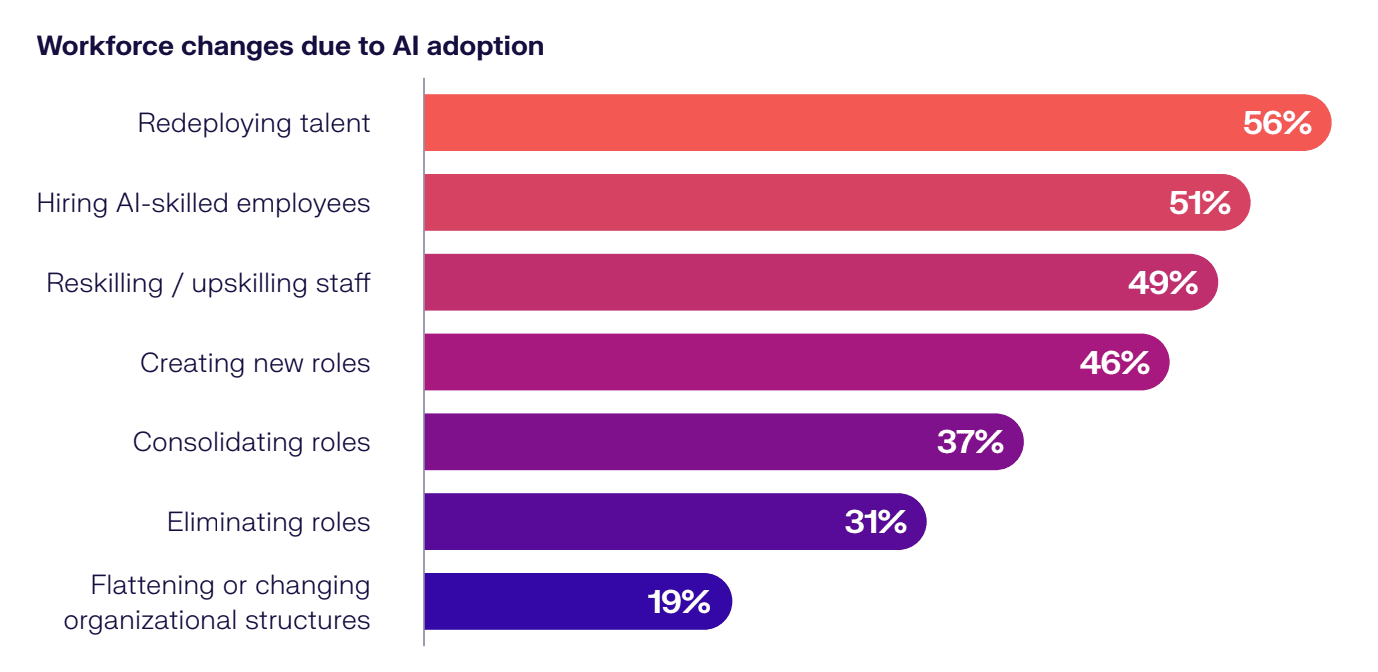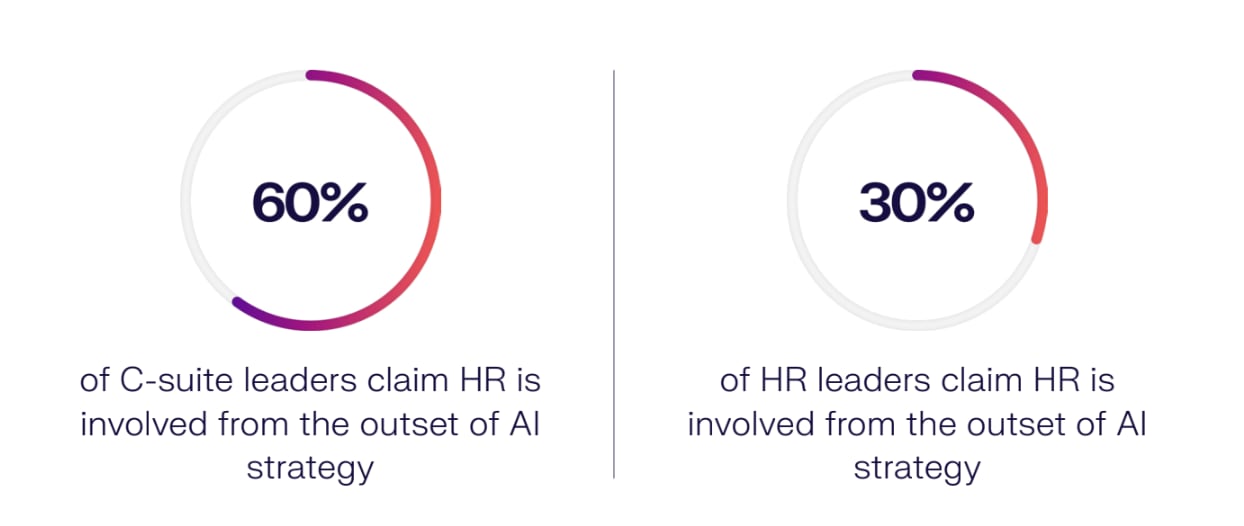The New Shape Of Work
Work is being reshaped before our eyes. Tasks, teams, and entire operating models are being redefined as organizations enter the era of the Great AI Workforce Redesign.
In Beamery’s latest research, 98% of C-level executives report they’ve already made workforce changes in response to AI: redeploying talent, creating new roles, and rethinking how people and technology collaborate.
A new form of intelligence is emerging inside enterprises: agentic AI. These systems can not only automate tasks, but reason, act, and adapt in real time. According to Salesforce and IDC, 67% of CEOs say agentic AI will be critical for competitive advantage, and 72% of CFOs believe it will transform their business model.
The question now isn’t whether organizations will use AI agents, but how they’ll reshape their structures and strategies to accommodate them.
From Hierarchies To Hybrid Systems
AI is accelerating the evolution from static job hierarchies to dynamic, hybrid systems. The workforce of tomorrow will feature humans and intelligent agents working side by side, sharing tasks and collaborating on decisions.

Beamery’s research shows that 91% of C-suite leaders expect their organizational charts to change in 2026, and 93% anticipate creating new roles or departments as a direct result of AI adoption.
“Agentic AI is a new labor model, new productivity model, and a new economic model.” – Marc Benioff, Chair & CEO, Salesforce
AI agents are no longer confined to isolated functions like chat or code generation. They’re becoming operational teammates that augment every level of the organization, from data analysis to customer experience. This doesn’t mean fewer humans – but it may mean different humans, and it means that people will be doing different work.
Redistributing Work, Not Replacing It
Contrary to fears of mass job displacement, the data suggests AI is redistributing work more than reducing it. Fifty-six percent of executives say they’re redeploying employees into new roles, while 49% are reskilling staff to keep pace with evolving needs. Among early-career employees, 73% say AI has made them more likely to stay with their employer because it’s creating new growth opportunities and more engaging work.

This reallocation of human effort is reshaping the “shape” of organizations. The once-familiar pyramid – wide at the base, narrow at the top – is being replaced by what Beamery calls the pentagon-shaped organization: a balanced structure where entry-level roles still provide a foundation for learning, a strong middle layer enables cross-functional collaboration, and AI agents support every tier with cognitive capacity and efficiency.

Confidence Without Clarity
There’s optimism, but also risk. Nearly all executives say they’re automating tasks, yet almost half admit they lack clarity on which ones to target. Only a third use AI-driven task analysis to benchmark automation decisions. The result: confidence outpacing visibility.

This “confidence without clarity” gap can lead to missed opportunities and wasted investment. Without precise insight into how work happens – which tasks are critical, repetitive, or ripe for augmentation – organizations risk automating the wrong things, and slowing transformation instead of accelerating it.
Designing For The Human-Agent Enterprise
The organizations that succeed in this new economy will treat AI not as a bolt-on technology but as a structural partner. That requires a clear understanding of both skills and tasks: who does what, where automation adds value, and how humans and agents can complement one another.
When task-level insights are combined with workforce data, leaders can design work around capability rather than hierarchy. They can redeploy people whose roles are evolving, reskill those at risk, and allocate AI agents to amplify human strengths.
It’s a model that transforms workforce planning from reactive to adaptive – from static headcount management to continuous capability optimization.
HR’s Seat At The Strategy Table
Despite the scale of change, HR is often still brought into AI strategy too late. Beamery’s research found that while 60% of executives believe the CHRO is involved from the outset, only 30% of HR leaders agree. This disconnect can undermine both employee engagement and transformation outcomes.

To shape the new shape of work, HR must play a central role in identifying automation opportunities, mapping skills to tasks, and designing fair, future-ready career paths. AI may be the engine, but HR holds the blueprint for how it integrates with people.
The Road Ahead
The era of agentic AI represents more than another technological wave. It’s redefining how organizations create value, build resilience, and grow talent. The companies that thrive will be those that pair machine intelligence with human insight, clarity with empathy, and innovation with intention.
AI isn’t just reshaping tasks; it’s redrawing the contours of work itself. And in this new shape of work, the most competitive organizations will be those that can see, understand, and continually evolve their entire ecosystem of people, skills, and intelligent agents.